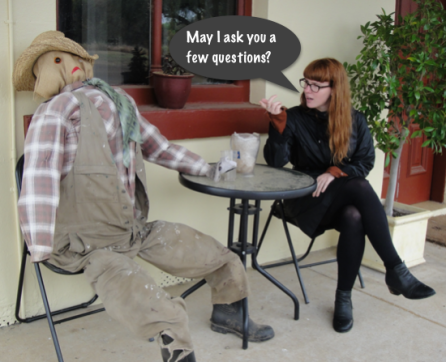 If you’ve hosted an event, activity, exhibition or festival in which you’ve garnered feedback from visitors, you may be familiar with the process of intercept interviewing. This is where a team of people with clipboards approach visitors and ask for feedback during or immediately after the event to capture their immediate views and experiences.
If you’ve hosted an event, activity, exhibition or festival in which you’ve garnered feedback from visitors, you may be familiar with the process of intercept interviewing. This is where a team of people with clipboards approach visitors and ask for feedback during or immediately after the event to capture their immediate views and experiences.
Starting this weekend and continuing throughout October, five small towns in Victoria are launching their Small Town Transformation projects. I will be training a team of local intercept interviewers at each of the five events. They will be conducting surveys amongst visitors to gain feedback on the events and their perceptions about what the transformation of the local town would mean to them.
The benefit of using locals is that by developing these new skills they will be contributing to the capacity building of their town. Their experience will make them well equipped to carry out similar tasks in the future. However, as they are not familiar with the interviewing process, I have anticipated some common errors that may occur, which, unless avoided, will compromise the accuracy of the surveys and could even make the sample invalid. These four tips are useful to consider in any intercept interview situation.
Tip #1. AVOID INTERVIEWER BIAS
This is a surprisingly common error that occurs when interviewers have not been adequately briefed or trained. Interviewer bias occurs when interviewers make their opinions known to the respondent, or direct the respondent to answer in a specific way, suggesting a desired answer. Interviewers may not realise they are possibly encouraging respondents to reach a conclusion which may not be a true reflection of their opinion. This form of questioning would introduce bias. It is crucial that interviewers never offer their own opinions on the questions they ask or the answers provided by respondents.
Tip #2. BE FAMILIAR WITH THE SURVEY
It is important that interviewers are familiar with the flow of the survey well before they start and follow the instructions exactly as written. They should go over the survey a number of times before the event and try to remember the pattern of questions and when page turns are approaching. There may be qualifications for respondents to be eligible to answer certain questions. Some respondents may be required to skip over particular questions if they responded to the previous one with a particular answer. None of these instructions should ever come as a surprise to the interviewer on the day.
Tip #3. AVOID CLERICAL MISTAKES
Interviewers should be careful to avoid clerical errors when writing responses to questions on the survey. When ticking boxes that say ‘tick one response only’, they should be sure to only tick one response. If they feel the respondent qualifies for more than one response, they should probe a little and ask them to commit to just one. When writing in responses to open-ended questions, that is, questions that require respondents to answer in their own words, it is important for responses to be written down verbatim. Interviewers should not try to interpret anything, they should simply record as much as possible as accurately as they can.
Tip #4. DON’T RUSH
A busy interviewer with quotas to fill and limited time can be tempted to race through the questionnaire in a parrot-like fashion to complete as many surveys as possible. Interviewers should try to avoid doing this, as it will certainly compromise the quality of the survey responses. It is preferable to complete fewer quality surveys than a larger sample of sub-standard questionnaires.
By the time my regional Victorian interviewing teams hit the town streets over October they will be well briefed to avoid these pitfalls and armed with a number of other pointers to help them achieve quality results. I know they are going to do a stellar job over the coming weeks and I look forward to sharing some of the findings with you. Oh, and perhaps Tip #5 is: Don’t interview scarecrows, it’s always best to select humans.
